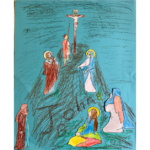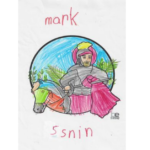
If St. Peter Damian had to present his business card, as we do nowadays, to introduce himself to us, it would read something like this: ‘Orphan, worker, student, monk, hermit, priest, teacher, writer, abbot, reformer, bishop, Cardinal… Saint… Doctor of the Church’.
He did all of this during his lifetime between 1007 and 1072. He was born in Ravenna, Italy, in a noble family that had become poor. Being the youngest among seven children he was regarded as a burden. His parents died when he was still very young, so one of his brothers took him into his household. Besides treating him badly, he made him work as a swineherd. However another of Peter’s brothers, Fr. Damian, who was a parish priest in Ravenna, moved him from this dire situation and took him under his protection. He gave him a good education, with Peter proving to be an excellent scholar wherever he was. He was so grateful for all that this brother had done for him that he adopted his brother’s name to his, hence becoming known as Peter Damian.
When he finalised his education, he started teaching at the University. After a while he felt that the University way of life was not for him. After a forty-day retreat in a monastery in Fonte-Avellana, he felt a call for monastic life. He joined the monks in a Benedictine monastery for a life of penance and prayer, giving alms and attending to the poor. At the same time he started teaching the other monks, not only in the monastery where he was but also in other neighbouring monasteries. He was only 35 years old when he was appointed abbot (superior) of the monastery.
It was at this time that Peter Damian started founding hermitages. These were simple dwellings sometimes attached to a monastery, where holy people would choose to live isolated from society, spending their life in prayer and fasting seeking a closer relationship with God by distancing themselves from the distractions of the world.
During this time the Catholic Church needed reform to be brought back on track to the path of holiness that was meant to bring the faithful in a closer relationship with Jesus Christ. Besides, the Church was lacking in holy role models. Peter Damian set out to write letters to Bishops, Cardinals and even to the Pope, in attempts to reform practices that were undermining the call of the Catholic Church.
He was 50 years old when the Pope made him Cardinal-Bishop of Ostia, in spite of his insistence to refuse the position. Peter Damian continued to write and speak openly, not being daunted by controversies. He attended a synod held at the Lateran in early 1047 and later another synod in Florence and in Rome, while continuing to write and to speak defending the Catholic Faith, putting his energy in fighting the unhealthy Church practices of those times. At the same time even as a Cardinal he would return to his hermitage seeking to continue with his life of prayer and penance.
He was 65 years old , when after an attack of fever, he died in a monastery near Ravenna. He was acclaimed a saint by the people and later the Church declared him Doctor of the Church.












